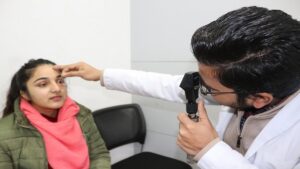
Surgical treatment is the most common and effective treatment for soft tissue disease. It involves the removal of the diseased tissue and the repair of the surrounding tissue.
Surgical treatment of soft tissue disease can be performed using traditional open surgery or minimally invasive surgery. The type of surgery that is best for you will depend on the type of soft tissue disease that you have, the severity of your condition, and your overall health.
Surgical treatment of soft tissue disease generally includes a combination of procedures. The approach depends on the location, size, and severity of the disease.
In most cases, the goal of surgery is to remove as much of the diseased tissue as possible while sparing healthy tissue. Soft tissue diseases can occur anywhere in the body, but they are most common in the abdominal cavity, chest cavity, and joints.
Symptoms vary depending on the type and location of the disease but may include pain, swelling, and stiffness. Surgical treatment of soft tissue disease may help to relieve symptoms and improve quality of life.
What Surgical Treatments Are Available For Soft Tissue Disease?
There are a number of surgical treatments available for patients with soft tissue disease. The type of surgery that is right for a patient will depend on the specific condition that is being treated. Some common surgeries used to treat soft tissue disease include:
– Arthroscopy: This is a minimally invasive surgery that is used to diagnose and treat problems within the joints.
– Tendon repair: This surgery is used to repair damaged tendons.
– Joint replacement: This surgery involves replacing a damaged joint with an artificial joint.
– Soft tissue grafting: This surgery is used to replace damaged or missing soft tissue.
– Amputation: This is the last resort treatment for patients with severe soft tissue damage who have not responded to other treatments.
How Can Surgery HelpTo Improve The Quality Of Life
Surgical treatment can improve the quality of life for patients with soft tissue disease. Surgical removal of infected or damaged tissue can reduce pain and promote healing.
Surgical reconstruction of deformities can improve appearance and function. Surgical treatment of soft tissue disease can also prevent the spread of infection and the development of chronic problems.
In some cases, surgery may be the only treatment option available. In other cases, surgery may be used in conjunction with other treatments, such as medication or physical therapy.
No matter what the situation, surgery can often help to improve the quality of life for patients with soft tissue disease.
What Are The Risks?
There are a number of risks associated with any surgery, and these will be specific to the individual case. However, some of the more general risks that may be associated with surgery for soft tissue disease include infection, bleeding, reactions to anesthesia, and blood clots.
In rare cases, there may also be complications related to the heart or lungs. It is important to discuss all of the potential risks with your surgeon prior to having any procedure done.
If you’re looking for a general surgeon in the Gwinnett area, look no further than Gwinnett Surgical Specialists. Their team of highly skilled and experienced surgeons are dedicated to providing the best possible care for our patients.
They offer a wide range of surgical services, including minimally invasive surgery, bariatric surgery, and cancer surgery. Whatever your surgical needs may be, they’re ready to help. Contact them today!




